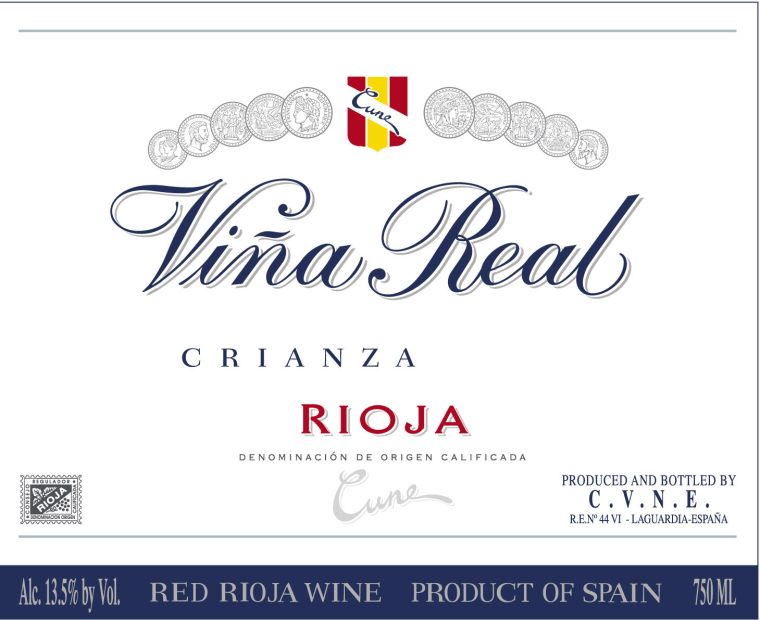When it comes to interesting and unusual wines and good value, Spain is almost un-matched. This is helped by the fact that there’s a Spanish wine revolution going on, with lots of emerging areas making impressive wines, and older regions modernizing and making better wines.
Spain's most famous wine area — and the name of its wine — is Rioja in the north. Most Riojas are red, and the dominant grape is the wonderful tempranillo, grown throughout Spain, but best known in Rioja.
In recent weeks, I’ve sampled a number of Riojas from C.V.N.E., a large and venerable Rioja producer (the letters stand for Compañía Vinicola del Norte de España, or Wine Company of Northern Spain). The company is popularly known as Cuné (pronounced coo-NAY).
A couple of wines really stood out. First among them in terms of price and accessibility was the 2002 Rioja “Crianza” from Viña Real, one of a number of brands within the Cuné universe. The term “crianza” simply means that a wine is aged in oak for at least a year and then a year in the bottle before release. “Reserva,” by contrast, means a wine has received at least four years of aging between barrel and bottle, and “gran reserva” signifies five years, with at least two in oak.
The ’02 Viña Real has a suggested price of $17 but tastes more expensive, and is an excellent example of the value to be found in Spain.
This is classic tempranillo, with ripe, deep raspberry and blueberry fruit, a slight toastiness from a year or so in oak barrels, and subtle notes of vanilla and mocha. Tempranillo is a very distinctive grape, but if I had to make a comparison I would put it somewhere between cabernet sauvignon and pinot noir.
The Viña Real, which is 90 percent tempranillo with small amounts of graciano, mazuelo and garnacha, is smooth and beautifully balanced. I enjoyed it with grilled chicken, and it will also go well with lamb and beef.
And speaking of beef, when a good friend stopped by on short notice for a quick but satisfying steak dinner (with the season’s prime corn-on-the-cob and mouth-watering sliced heirloom tomatoes), I decided to “kick it up a notch,” to borrow a phrase, with the wine.

The 1998 Imperial “Reserva” Rioja delivered with elegance and depth reminiscent of good Bordeaux. Aromas of dark berry, earth and vanilla set the stage for an explosion in the mouth — black cherry, blueberry, plum, and a lingering spiciness. Here, the oak is more pronounced than that of the Viña Real, but seamlessly integrated. This is a wine to enjoy now or to cellar for several years. It’s about $45.
There’s one more thing I liked about these Riojas. With alcohol at a moderate 13 percent, they demonstrate how Rioja can achieve deep and concentrated fruit in a comparatively lean style that, again, invites comparison with Bordeaux rather than, say, the brawny reds of California or Australia. In a wine world where bigger is increasingly and, in my view, unfortunately, seen as better, try one of these Riojas for a taste of what superb wine doesn’t have to be.
Edward Deitch's wine column appears Wednesdays. He welcomes comments from readers. Write to him at EdwardDeitch